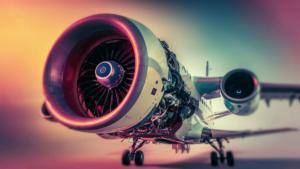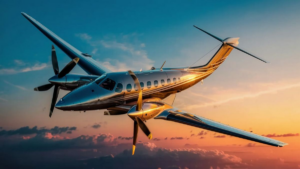In the dynamic realm of aviation, the commercial jet aircraft market stands as a pivotal segment, driving global connectivity, economic growth, and technological innovation. This market encapsulates the manufacturing, sales, and operation of jet-powered aircraft primarily designed for passenger and cargo transportation. It is characterized by intense competition, technological advancements, regulatory frameworks, and economic factors that shape its trajectory.
Market Dynamics
The commercial jet aircraft market is influenced by various factors, including economic conditions, geopolitical tensions, fuel prices, environmental regulations, and consumer demand. Fluctuations in oil prices often impact operating costs, prompting airlines to adjust fleet strategies and seek more fuel-efficient aircraft.
Moreover, emerging markets, such as Asia-Pacific and the Middle East, are experiencing rapid urbanization and economic expansion, driving demand for air travel and necessitating fleet expansions and modernizations by airlines operating in these regions.
Technological Advancements
Advancements in aerospace engineering and materials science have led to the development of more fuel-efficient and environmentally friendly aircraft. Manufacturers are investing heavily in research and development to incorporate innovations such as composite materials, aerodynamic enhancements, and advanced propulsion systems.
The introduction of next-generation aircraft models, such as the Boeing 787 Dreamliner and Airbus A350 XWB, showcases the industry’s commitment to improving fuel efficiency, reducing emissions, and enhancing passenger comfort.
Market Competition
The commercial jet aircraft market is dominated by two major players: Boeing and Airbus. These aerospace giants compete fiercely for market share, continuously introducing new aircraft models and technology upgrades to attract customers.
Additionally, regional aircraft manufacturers, such as Embraer and Bombardier, cater to niche markets and serve as formidable competitors, especially in the regional jet segment.
Regulatory Environment
The aviation industry operates within a stringent regulatory framework governed by international organizations such as the International Civil Aviation Organization (ICAO) and regulatory bodies in individual countries. Safety standards, emissions regulations, and aircraft certification processes play a crucial role in shaping the commercial jet aircraft market.
Furthermore, environmental concerns have prompted regulators to impose stricter emissions standards, driving manufacturers to develop more eco-friendly aircraft and sustainable aviation solutions.
Future Outlook
The commercial jet aircraft market is poised for continued growth and innovation, fueled by rising global demand for air travel, technological advancements, and evolving regulatory landscapes. As urbanization accelerates and emerging economies expand, the need for efficient and sustainable air transportation solutions will drive investment and innovation in the industry.
Moreover, the COVID-19 pandemic has spurred renewed focus on passenger health and safety, leading to innovations such as touchless technology, enhanced cabin air filtration systems, and antimicrobial surfaces, which are likely to shape the future of commercial air travel.
Environmental Sustainability
Environmental sustainability is becoming increasingly vital in the commercial jet aircraft market. With growing concerns about climate change and carbon emissions, there’s a rising emphasis on developing eco-friendly aviation solutions. This includes the use of sustainable aviation fuels (SAFs), investing in electric and hybrid propulsion systems, and implementing aerodynamic design improvements to reduce fuel consumption and emissions.
SAFs and Alternative Fuels
One significant area of focus is the development and adoption of sustainable aviation fuels (SAFs). These fuels, derived from renewable sources such as biomass, algae, and waste materials, offer a potential reduction in carbon emissions compared to traditional jet fuels. Industry stakeholders are actively collaborating to scale up production and establish supply chains for SAFs, aiming to make them a viable and widespread alternative in the aviation industry.
Electric and Hybrid Propulsion
Electric and hybrid propulsion systems present promising alternatives for reducing the environmental impact of commercial aviation. These systems aim to decrease reliance on fossil fuels by integrating electric motors or hybrid-electric architectures into aircraft designs. While electric aircraft are still in the early stages of development and face challenges such as battery technology limitations, ongoing research and investment suggest they could play a significant role in achieving sustainability goals in the long term.
Market Trends
Several emerging trends are shaping the commercial jet aircraft market, influencing product development, fleet strategies, and customer preferences. Understanding these trends is essential for stakeholders to stay competitive and capitalize on opportunities in the evolving aviation landscape.
Urban Air Mobility (UAM)
Urban Air Mobility (UAM) is gaining traction as a promising concept for addressing urban congestion and providing efficient transportation solutions. UAM involves the use of electric vertical takeoff and landing (eVTOL) aircraft for short-distance urban transportation, offering potential benefits such as reduced travel times, lower emissions, and increased accessibility to urban areas. While commercial implementation is still in the early stages, investments and partnerships in the UAM sector indicate its growing significance in the future of aviation.
| Trend | Description |
|---|---|
| Digital Transformation | The aviation industry is undergoing a digital transformation, with technologies such as artificial intelligence, big data analytics, and blockchain reshaping operations, maintenance, and passenger experiences. |
| Emerging Markets | Emerging economies in regions like Asia-Pacific, Latin America, and Africa are driving growth in air travel demand, presenting opportunities for market expansion and fleet modernization. |
| Supersonic Travel | Advancements in supersonic aircraft technology could revolutionize long-haul travel by significantly reducing flight times, although regulatory and environmental challenges remain to be addressed. |
Frequently Asked Questions
- What are sustainable aviation fuels (SAFs) and how do they contribute to environmental sustainability?
- What role do electric and hybrid propulsion systems play in reducing carbon emissions in commercial aviation?
- What are some key trends shaping the future of the commercial jet aircraft market?
See also:






